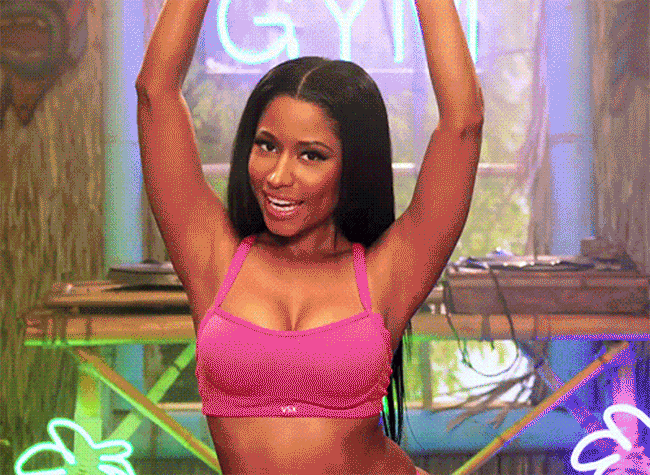The Science Behind Why Sports Bras Are Terrible

It’s hard to ignore the craze around sports bras. The kingslayer of the traditional underwire bra and the champion of athleisure, the sports bra has enjoyed more than a year of massive popularity.
But the truth is, I hate sports bras. Let me preface by telling you two things: (1) My breast size is a 34DD, according to the woman who measured me at Victoria’s Secret, which also happens to be the average size of American women’s breasts; and (2) I exercise regularly, up to six days any given week. Often, my desire to work out is dampened by the thought of the inevitable breast pain that comes with physical activity.
My plight is not unique. As it turns out, science backs me up.
The lack of functional sports bras has potentially far-reaching consequences, especially related to women’s health. The University of Portsmouth’s Department of Sports and Exercise Science has a department devoted to breast health, and has published a number of studies on the subject. In a 2016 paper, researchers examined how sports-bra support affects the “biomechanical, physiological and subjective” measures of running. The research found after investigating 62 different variables that willingness to exercise was the most affected by changes in breast support.
That effect can surface as early as puberty for some girls — again, potentially having an impact on their lifelong relationship to exercise. A 2015 study conducted in the United Kingdom found that 46 percent of girls ages 13 and 14 reported “that their breasts had some effect on their sports and exercise participation” — a figure that jumped “significantly” to 63% in larger-breasted girls. Girls in the study said that not only were they concerned about how their breasts bounced while exercising, but also that they were embarrassed when getting changed because of their breasts or their bra.
Given the hypergrowth in the athleisure market, it may seem as though there are countless sports bras that would help women combat the issues breasts can create during exercise. But it’s not that finding a sports bra to buy is difficult. In fact, it’s easier than ever to find one that is stylish, with retailers from suburban staple Kohl’s to flexible membership sellers like Fabletics devoting big money to the athleisure market. Although sports bras purport to support and protect your bosom when you’re most vulnerable, today’s most stylish selections tend to do neither.

Charcy Evers, a trend analyst, confirms there’s a difference in the growth between the performance gear market (i.e., availability of sports bras focused on function) and the athleisure market, which is solely about lifestyle and comfort.
“There’s crossover, of course, but athleisure is more of a hybrid and doesn’t necessarily have the qualities of athletic wear like wicking,” Evers told Yahoo Style in an email. “The bralette is a great example of how sports inspired lingerie, but it’s about form not function.”
Even professional athletes voice frustration about the dearth of functional sports bras in the market. Serena Williams, for example, sought to launch her own line of sports bras with the Australian brand Berlei.
There are three primary types of sports bras: compression, underwire, and those that combine the two. Each comes with pros and cons: Compression bras may keep your breasts locked down, but they tend to stretch out after a few uses, and wearers complain of the squished-down “uniboob” effect. Sports bras with underwire may solve the uniboob problem, but they tend to make breasts appear larger than they are in a traditional T-shirt bra. They can also create painful rashes beneath the breasts. Hybrid options, meanwhile, can be altogether suffocating.
The future of sports bras is not totally bleak, though. Nike, Under Armour, and Adidas — the top three performance brands, according to research firm Fung Global Retail & Technology — spent decades targeting men by using high-performance materials in their clothing, but now they’ve shifted their focus to the women’s market. Still, the improvements in engineering seem slow to come.

Developing a great-fitting sports bra is tough because of the wild movement patterns for breasts in motion. “In most sports a female athlete plays, breasts tend to move in the shape of a butterfly—up and left, down, up and right, down,” said Martine Mientjes, Nike’s Apparel Innovation Project research director.
As a result, Nike spent two years developing its Pro bra collection, which included 300 “wear tests” and 1,800 hours of wash testing to assess fit, shrinkage, durability, and appearance. (That timeline is standard, as it also takes the Brooks Running apparel team about 18 months to develop a sports bra.)
Nike also studied how biomechanics affect performance by using a “motion analysis system” to examine how, at 200 frames per second, breasts moved while athletes ran on treadmills.
So, what’s an ample-bosomed woman to do about exercise? The Nike Pro collection offers six bras with varying levels of support, with the go-to option being the Nike Pro Rival bra. And this Fila Sport option didn’t make my most recent run miserable.
While there’s work being done, one can’t help but wonder: Where’s the support in the $1.67 trillion global apparel market?
Read more from Yahoo Style + Beauty:
How Michelle Dockery Ditched Downton Abbey for Sexy Pinstripes
What’s the Difference Between a $2,000 Burberry Trench Coat and a $200 One?
Jenna Dewan Tatum’s Very Specific Reason for Working With Jennifer Lopez
Follow us on Instagram, Facebook, and Pinterest for nonstop inspiration delivered fresh to your feed, every day. For Twitter updates, follow @YahooStyle and @YahooBeauty.
Alexandra Mondalek is a writer for Yahoo Style + Beauty. Follow her on Twitter @amondalek.
